When I was a kid, my dad and I used to go on regular weekend hikes up to Henninger Flats at the Eaton Canyon Natural Area in Altadena, California. When we made it to the top, we would sit at one of the wooden benches overlooking the San Gabriel Valley, enjoying our midhike snack, usually a fruit of some sort and a handful of trail mix. On a clear day, we would try to identify neighborhood landmarks from where we sat. Lake Avenue. Altadena Country Club. Victory Park. Maybe our house in that patch of trees somewhere. I’ve thought about these moments more especially after the Eaton Fire earlier this year that devastated the area.
I got a chance to visit the Henninger Trailhead recently, seeing it from behind the locked fence that protected the area. As I took in the brown barren hillside, a knot built up in my throat and I fought back tears, thinking about the many memories that my family had going up and down this trail.
While I am fortunate that my family is safe and still has their home after the fires, it made me reflect on my connection to nature. It brought up how important it is to care for the earth so that my kids and future generations can also enjoy beautiful spaces.
Earth Day is about health
When Earth Day first started back in the 1970s, it was because of the impact of industrial development on human health. Oil spills, air pollution, clean water. Back then and now, the issues are the same. All that impacts our environment continues to impact our health. Environmental health is human health.
You have probably seen this in your practice as well. If you have patients whose asthma is triggered by air pollution, or who cannot go outside because of a triple digit heat wave, or who struggle with managing their obesity due to lack of access to safe green spaces, then you have seen the impact of the environment on their health.
As a pediatrician, I see firsthand what these environmental impacts are on my patients’ health, especially in the most vulnerable communities. The environment plays a role in our health in numerous ways. From the impact of wildfires on asthma and respiratory health, to longer and stronger allergy seasons, to heat stress exacerbating underlying chronic disease.
Earth Day reminds us that we cannot separate caring for our patients with advocating for the environment and the overwhelming interdependence of the environment on our health.
Clean air, safe drinking water, ecological biodiversity, and green spaces are not luxuries. They are essential for creating safe homes and communities for our patients to thrive. Our children, elderly and pregnant patients, and marginalized communities are those more disproportionately affected by the environment.
Nature as a clinical and preventive tool
While the more we recognize the impact of the environment on our health, time in nature can also be a useful tool in helping optimize health. More and more studies confirm what we intuitively already know, that time in nature is beneficial for our health.
Time in nature has even been shown to promote immune health and improved microbiomes. It is linked to psychological health with less anxiety and depression. In children with ADHD, it is linked to a reduction in ADHD symptoms. In one small study, access through nature even through a window after surgery has been linked to improved outcomes including shorter hospital stays and less pain. This is just a small sampling of the numerous benefits that time in nature has on our health.
Ever heard of forest bathing? The Japanese call it Shinrin Yoku. Studies have shown that forest bathing has been linked to reduction in cortisol, reduction in depressive tendencies, and reduction in blood pressure among many others.
We frequently recommend medications, books, vitamins, sleep, stress management, and numerous other things to help our patients on their path to health, why not include dedicated time in nature?
While you don’t need to live in a forest to experience the benefits of nature and while there is such a thing as a nature equity gap, even just 20–30 minutes outdoors daily can be a beneficial, simple, and accessible health intervention.
Nature isn’t just for patients, it’s for us too
And what about us as physicians? Nature has a role there too.
As a primary care provider with young kids, most of my day is spent caring for others, whether it is in the clinic or at home. With burnout, compassion fatigue, and moral injury becoming all too common throughout medicine, a little time in nature can help us strengthen our own resilience in this trying time.
Making nature a priority for myself has been instrumental in helping to support my own mental health, allowing me to reset so that I can continue to care for my patients, and at the end of the day, be present for my family.
Nature continues to give in so many ways. This Earth Day, let us remember to give back. Doing so means caring for ourselves and for our patients. A nature connection isn’t just a nice to have or a feel-good recommendation, it is essential to be able to provide sustainable, equitable, whole-person health care.
Earth Day as a moment for reflection and action
Let this Earth Day be a bit of a moment to reset. For both our professional identities and our personal health.
Here are some ways to incorporate more nature moments into your daily life.
Take a walk outside between patients or during your lunch break.
Include greenery in your office space.
Support access to green spaces in your community.
Learn to live seasonally including growing and eating seasonally.
Schedule some uninterrupted screen-free time in nature as a family.
Celebrate a mindful moment by noticing nearby nature.
Step outside and take some deep breaths.
Spending time in nature doesn’t need to mean going out into the backcountry or hiking up a mountain, though kudos to you if you’re able to do those things. It can mean appreciating nature where you are and in your every day. The more we recognize the healing power of nature for ourselves, the more we are willing to care for the earth.
A shared responsibility
Just like health is interconnected, let us use this Earth Day to remember our interconnectedness with each other and the world that sustains us.
What can you do this Earth Day to reflect on what nature gives to you and to incorporate nature-based activities into your day-to-day lives and into your care for patients? What about in your neighborhood? Your community?
As physicians, we are in the unique position to have our voices heard. By using our physician voice, we can advocate for policies that support equitable access to parks and green spaces, policies that protect public lands, and support organizations with earth-centered missions.
What will you do this Earth Day to heal yourself, your patients, and the planet?
Hannah Valino is a pediatrician.

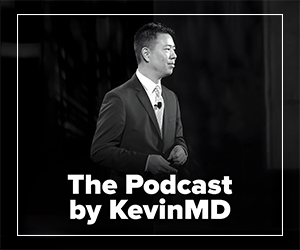











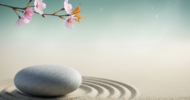
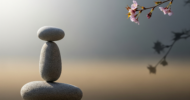
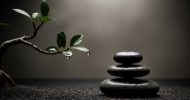
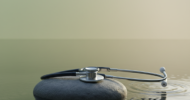




![Artificial intelligence ends the dangerous cycle of delayed patient care [PODCAST]](https://kevinmd.com/wp-content/uploads/Design-2-190x100.jpg)
